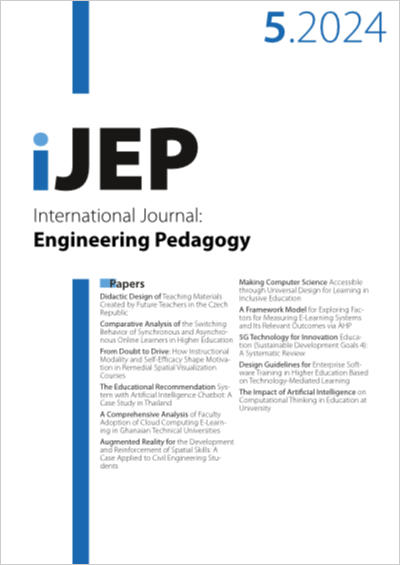Comparative Analysis of the Switching Behavior of Synchronous and Asynchronous Online Learners in Higher Education
DOI:
https://doi.org/10.3991/ijep.v14i5.48845Keywords:
asynchronous, synchronous, online learning, MOOC, switching, behaviorAbstract
This study examines the phenomenon of learner behavior change in synchronous and asynchronous online learning environments. The article assesses the level, stage, reasons, and impact of change among online learners. To facilitate systematic analysis, a set of comparison parameters has been developed. These parameters include success and failure rates, mode and location of learning, level of interaction, group and individualized learning, courses with practical exercises, economic factors, self-regulated learning, indicators of change, technological tools, learner satisfaction, and the impact of a blended learning model. Overall, this article contributes to the understanding of online learners’ behavioral changes and provides valuable information to educators, administrators, and online education providers for designing effective online learning environments. The identified parameters can serve as a foundation for future research on how synchronous or asynchronous modes can either enhance or hinder the overall learning experience of online learners.
Downloads
Published
How to Cite
Issue
Section
License
Copyright (c) 2024 Prof Laxmisha Rai, Chunrao Deng

This work is licensed under a Creative Commons Attribution 4.0 International License.



